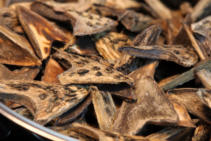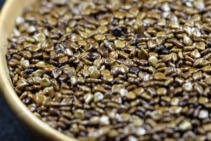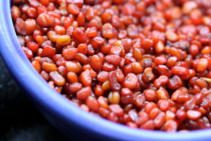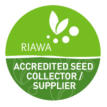




© Seed Shed 2023 Copyright
Seed Resources
Sowing the seeds of your success
Seed Shed develop contacts across the industry from seed pickers to professional rehabilitation experts. We aim to be the supplier of choice to industries across the Australia hoping to restore native environments in a sustainable, productive way. Below you will find a range of resources from across the Internet to help you initiate, manage and investigate seed cultivation & restorative environmental engineering. If you find additional links you think would be of value to our clients, please let us knowOrganisations & Associations
• RIAWA - Revegetation Industry Association of WA The RIAWA aim to have members from all sectors of the industry co-operate in creating a code of practice, and a set of objectives to ensure that all revegetation and rehabilitation works conducted both now and in the future are to the highest standards possible. • ANBG - Australian Botanical Gardens The Australian National Botanic Gardens maintains a scientific collection of native plants from all parts of Australia. The plants are displayed for the enjoyment and education of visitors and are used for research into plant classification and biology. A herbarium of preserved plant specimens is closely associated with the living collection. • BGPA - Kings Park & Botanic Garden - Kings Park is home to the spectacular Western Australian Botanic Garden, which displays over 3,000 species of the State’s unique flora. Two thirds of the 400 hectare park is protected as bushland and provides a haven for native biological diversity. • Wildflower Society of WA - Website The Wildflower Society of Western Australia Inc. (WSWA) was established in 1958 to promote the value of our natural bushland. The Society does this through regular meetings and excursions, native plant sales, bushland plant surveys, book sales, donations, and attendance at relevant events • Australian Native Plant Society Website formerly known as the Association of Societies for Growing Australian Plants (ASGAP). We have been growing and promoting Australian Plants since 1957.References and Databases
• IBIS Databases - Integrated Botanical Information System Access to a range of Australian plant databases hosted under the Centre for Australian National Biodiverity Research (CANBR) including the Australian National Herbarium • Western Australia Flora - Florabase A database of WA Flora • Australian Grasses - AusGrass2 - AusGrass2 builds on the foundation of AusGrass (Sharp & Simon 2002) from data maintained in DELTA format, one for species and infra-specific taxa and another for genera. • Common Name Database - Australian Plant Common Name Database There is no standardised set of common names for the Australian flora. This web facility draws on a limited range of published sources to help people find a match between common names and scientific botanical names. It is not authoritative or complete. Incomplete or partial names can be searched on • Gardening Australia - Native Plants Fact Sheets Videos and fact sheets from the popular ABC program Gardening Australia • Propagating Native Plants - How to from the Australian National Botanic Garden








© The Seed Shed 2023
Seed Resources
Sowing the seeds of your
success
Seed Shed develop contacts across the industry from seed pickers to professional rehabilitation experts. We aim to be the supplier of choice to industries across the Australia hoping to restore native environments in a sustainable, productive way. Below you will find a range of resources from across the Internet to help you initiate, manage and investigate seed cultivation & restorative environmental engineering. If you find additional links you think would be of value to our clients, please let us knowOrganisations & Associations
• RIAWA - Revegetation Industry Association of WA The RIAWA aim to have members from all sectors of the industry co-operate in creating a code of practice, and a set of objectives to ensure that all revegetation and rehabilitation works conducted both now and in the future are to the highest standards possible. • ANBG - Australian Botanical Gardens The Australian National Botanic Gardens maintains a scientific collection of native plants from all parts of Australia. The plants are displayed for the enjoyment and education of visitors and are used for research into plant classification and biology. A herbarium of preserved plant specimens is closely associated with the living collection. • BGPA - Kings Park & Botanic Garden - Kings Park is home to the spectacular Western Australian Botanic Garden, which displays over 3,000 species of the State’s unique flora. Two thirds of the 400 hectare park is protected as bushland and provides a haven for native biological diversity. • Wildflower Society of WA - Website The Wildflower Society of Western Australia Inc. (WSWA) was established in 1958 to promote the value of our natural bushland. The Society does this through regular meetings and excursions, native plant sales, bushland plant surveys, book sales, donations, and attendance at relevant events • Australian Native Plant Society Website formerly known as the Association of Societies for Growing Australian Plants (ASGAP). We have been growing and promoting Australian Plants since 1957.References and Databases
• IBIS Databases - Integrated Botanical Information System Access to a range of Australian plant databases hosted under the Centre for Australian National Biodiverity Research (CANBR) including the Australian National Herbarium • Western Australia Flora - Florabase A database of WA Flora • Australian Grasses - AusGrass2 - AusGrass2 builds on the foundation of AusGrass (Sharp & Simon 2002) from data maintained in DELTA format, one for species and infra-specific taxa and another for genera. • Common Name Database - Australian Plant Common Name Database There is no standardised set of common names for the Australian flora. This web facility draws on a limited range of published sources to help people find a match between common names and scientific botanical names. It is not authoritative or complete. Incomplete or partial names can be searched on • Gardening Australia - Native Plants Fact Sheets Videos and fact sheets from the popular ABC program Gardening Australia • Propagating Native Plants - How to from the Australian National Botanic Garden



















